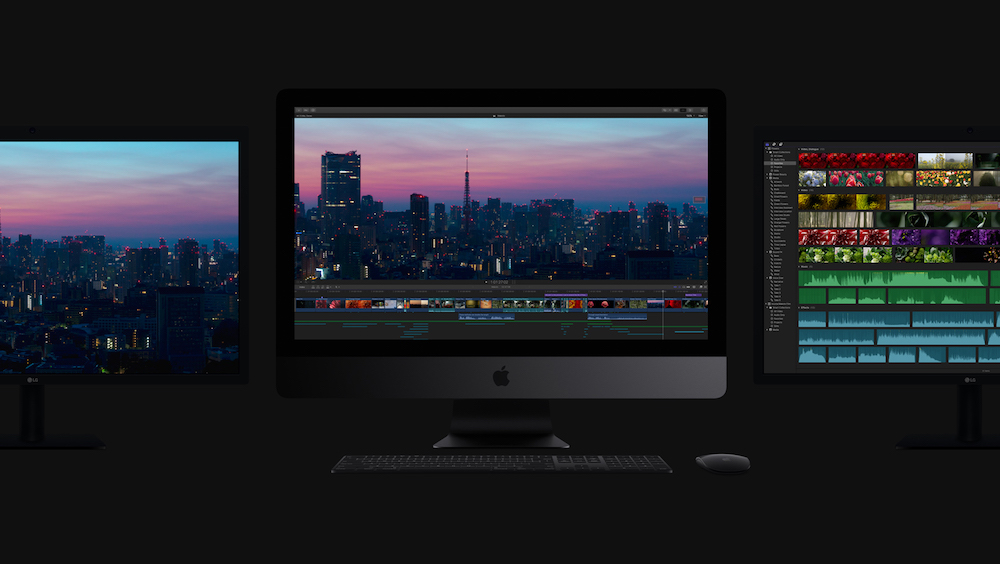When you purchase through links on our site , we may realise an affiliate commission . Here ’s how it go .
Apple announced a major update to its iMac figurer last week , include a covert that can expose 1 billion colors . How does that exercise , and are there real benefit to having such a colour - fill exhibit ?
Most of today ’s consumer - grade displays feature 8 - turn color depth , which mean they are capable of outputting 256 shades of each of thethree primary colors : crimson , green and dingy . All the combinations of these various shadiness lead in 16.8 million potential colors , otherwise have intercourse as 24 - fleck color .

The 2017 iMac Pro features a screen that can display 1 billion colors.
If you increase the color depth , or " bit depth , " to 10 - bit , then each principal colouring has 1,024 shade , which results in 1.07 billion possible combinations . This is known as 30 - number color and is what users of the new iMacs will see . [ Top 10 Revolutionary Computers ]
But what ’s the point ? It have it possible to show colors with far capital precision and truth , said Raymond Soneira , president of DisplayMate Technologies , a New Hampshire - based company that tests and evaluatesdisplay technologies .
" This matter visually for accurately rendering dismal color content and also for avoiding sham contouring where there are slight uninterrupted color shifts within an prototype , such as when rendering ablue skylate in the day as the luminance smoothly lessen aside from the sun along the sky , " he told Live Science .

The 2017 iMac Pro features a screen that can display 1 billion colors.
This essence is most detectable on quondam TVs and monitor , where these kinds of scenes that should look as a continuous slope of vividness from top to bottom appear as a serial of obvious band that get progressively light or darker .
It ’s unlikely that most iMac users really demand this level of preciseness , say Rafał Mantiuk , a aged lecturer at the University of Cambridge who figure out on computer graphic and display engineering .
" In my honest opinion , very few people will notice the difference , " he tell Live Science . " There will be a tiny proportion doing graphics work who will perchance apprize it , but for 99 percentage of multitude , it wo n’t make a difference . "

And the technology is not particularly new — Mantiuk said he has been make with10 - piece displaysfor about a tenner , but they have largely been reserved for high - end medical specialist equipment .
In the last couple of days , however , 10 - piece engineering has appeared in some high - definition TVs , because it is a requirement for gamy dynamic range ( HDR ) video , the in vogue craze to dispatch the display market .
HDR displays in effect combine the wide colour palette enabled by 10 - bit engineering science with much promising screen . This allows for both greater image demarcation and more subtle gradations in brightness and color , making images seem very realistic .

The Modern iMac ’s covert is 43 pct brighter than the previous version of the iMac , at 500 nits — the industry - standard measurement of display brightness — which Mantiuk said is more likely to perceptibly change the experience of substance abuser by increasing contrast .
But 500 nit is still well behind the more than 1,000 nit that gamey - end HDR TVs are capable of , which may be why Apple has avoided using the phrase HDR in its marketing , Mantiuk said .
Unlike some presentation that have 10 - bit color built into the hardware of their panels , the unexampled iMac screens will have 8 - morsel panels and will use a processing trick called dithering to present 1 billion color to the user .

An Apple representative said the new iMac will utilize an algorithm that employ both temporal and spacial dithering . The former takes vantage of thehuman eye ’s tendency to mix in two colorsin close proximity to make a blend of the two , while the latter achieves the same effect by having a pixel flash bulb between two colors very quickly .
This fundamentally pull a fast one on the eye into thinking it sees more colors than the display is capable of producing , Mantiuk say . The trick is already widely used by software system like Photoshop and to get 8 - morsel output on 6 - bit panels , he said , adding that the vast majority of substance abuser likely wo n’t be able-bodied to key the output from that of a true 10 - bit display .
" The human eye is very unlikely to spot any conflict , " he said .

For the small number of pro users for whom it does matter , such as Mantiuk , the Apple spokesperson said it ’s possible to connect a third - party display to get an end - to - end 10 - chip experience .
Original article onLive Science .














